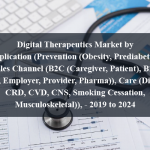OVERVIEW
Research by Global Market Studies has reported a CAGR of 14.6 % for the Proteomics Market, expecting it to expand to a value of USD 72.9 billion by 2028.
Proteomics is the large-scale study of proteins, including their structures, functions, interactions, and modifications within cells, tissues, or organisms. It involves the analysis and characterization of the entire proteome, which refers to the complete set of proteins expressed by an organism or within a specific cellular context.
Proteomics is essential for drug discovery, diagnosis, personalized medicine, functional protein understanding, clinical and environmental monitoring, and agricultural and ecological research.
Table of Content
Market Dynamics
Drivers:
Advancements in mass spectrometry and other analytical technologies have improved proteomic analysis efficiency, driving market growth. The shift towards personalized medicine requires the identification of specific protein biomarkers for accurate diagnosis and targeted treatments. The pharmaceutical industry’s focus on drug development and biomarker discovery has accelerated the adoption of proteomic technology.
The rising prevalence of chronic diseases necessitates better diagnostic and therapeutic approaches, which proteomics can help address. Government and private funding support has provided financial boosts to proteomics research and development. Collaborations and partnerships between academic research institutes, pharmaceutical companies, and biotechnology firms have facilitated the integration of proteomic technologies into drug development and clinical research.
Opportunities:
Mass spectrometry and other high-throughput proteomic techniques have substantially improved the speed and effectiveness of protein analysis, allowing for the study of large-scale proteomes. Service providers assist researchers and enterprises with specialized knowledge and resources by offering protein identification and characterization services. Bioinformatics software tools and platforms enable proteomic data analysis by allowing actionable insights from large datasets.
Protein assays and arrays allow for the simultaneous study of numerous proteins, permitting quick protein target screening and quantification. With access to cutting-edge technologies and qualified scientific support, Contract Research Organizations (CROs) provide pharmaceutical businesses and academic institutions with specialized research solutions. Public proteomics databases provide useful tools for information exchange, comparison, and protein-related knowledge discovery.
Restraints:
Proteomics research faces several challenges, including high costs, data complexity, sample complexity, and variability. The equipment, reagents, and technologies required for proteomics studies can be expensive, limiting accessibility to smaller research facilities and institutions. Data processing challenges can hinder the widespread adoption of proteomic technologies.
Standardization and reproducibility issues arise due to multiple experimental steps and workflows. Sample complexity and variability in biological samples can make it difficult to capture a comprehensive view of the proteome. Additionally, the lack of well-characterized protein databases can hinder the identification and functional characterization of proteins in complex samples.
Regional Information:
North America: North America, particularly the United States, has been a significant player in the proteomics market. The presence of established research institutions, biotechnology companies, and pharmaceutical giants has contributed to the growth of proteomics in this region. Funding from government agencies, such as the National Institutes of Health (NIH), has also supported proteomic research initiatives. Several academic and industrial collaborations have driven innovation and the adoption of proteomic technologies in drug development, diagnostics, and personalized medicine.
Europe: Europe has a robust proteomics research community with active participation from countries like the United Kingdom, Germany, France, and the Netherlands. There are several European consortia and initiatives focused on advancing proteomics, such as the European Proteomics Association (EuPA). European research institutions have made significant contributions to biomarker discovery, disease research, and functional proteomics. Government funding and support for research projects have played a crucial role in the region’s proteomics advancements.
Asia-Pacific: The Asia-Pacific region has shown increasing interest and investment in proteomics research. Countries like Japan, China, and South Korea have emerged as key players in this field. Rapidly growing economies and an expanding biotechnology and pharmaceutical sector have driven proteomic research in the region. Government initiatives promoting scientific research and collaborations with international partners have also contributed to the growth of proteomics in Asia-Pacific.
Recent Developments:
• In February 2023, Waters Corporation acquired Wyatt Technology, which enhances the portfolio of Separation and detection and provides customers with an unmatched set of analytical solutions across a wide range of applications.
• In October 2022, Agilent Technologies Inc. and CMP Scientific Corp. entered into a co-marketing agreement to provide an integrated capillary electrophoresis-mass spectrometry (CE-MS) solution for the life science and pharmaceutical industries.
Key Players:
Thermo Fisher Scientific Inc., Danaher Corporation, Merck KGaA, Agilent Technologies Inc., and Waters Corporation
Frequently Asked Questions
1) What is the projected market value of the Proteomics Market?
– The Proteomics Market is expected to reach a value of USD 72.9 billion by 2028.
2) What is the estimated CAGR of the Proteomics Market over the 2023–2028 forecast period?
– The Proteomics Market is expected to grow at a CAGR of approximately 14.6% from 2023 to 2028.
3) Who are the key players in the Proteomics Market?
– Thermo Fisher Scientific Inc., Danaher Corporation, Merck KGaA, Agilent Technologies Inc., and Waters Corporation.
4) What are the drivers for the Proteomics Market?
– Mass spectrometry advances enhance proteomic analysis efficiency, driving market growth and personalized medicine. The pharmaceutical industry’s focus on drug development and biomarker discovery accelerates proteomics adoption.
5) What are the restraints and challenges in the Proteomics Market?
– Proteomics research faces challenges like high costs, data complexity, standardization, reproducibility issues, sample variability, and a lack of well-characterized protein databases.
6) What are the key applications and offerings of the Proteomics Market?
– Proteomics is essential for drug discovery, diagnosis, personalized medicine, functional protein understanding, clinical and environmental monitoring, and agricultural and ecological research.
7) Which region is expected to drive the market for the forecast period?
– North America has the highest value share in the global market and is expected to dominate shares in the forecast period.
Why Choose Us?
Insights into Market Trends: Global Market Studies reports provide valuable insights into market trends, including market size, segmentation, growth drivers, and market dynamics. This information helps clients make strategic decisions, such as product development, market positioning, and marketing strategies.
Competitor Analysis: Our reports provide detailed information about competitors, including their market share, product offerings, pricing, and competitive strategies. This data can be used to inform competitive strategies and to identify opportunities for growth and expansion.
Industry Forecasts: Our reports provide industry forecasts, which will inform your business strategies, such as investment decisions, production planning, and workforce planning. These forecasts can help you to prepare for future trends and to take advantage of growth opportunities.
Access to Industry Experts: Our solutions include contributions from industry experts, including analysts, consultants, and subject matter experts. This access to expert insights can be valuable for you to understand the market.
Time and Cost Savings: Our team at Global Market Studies can save you time and reduce the cost of conducting market research by providing comprehensive and up-to-date information in a single report, avoiding the need for additional market research efforts.












